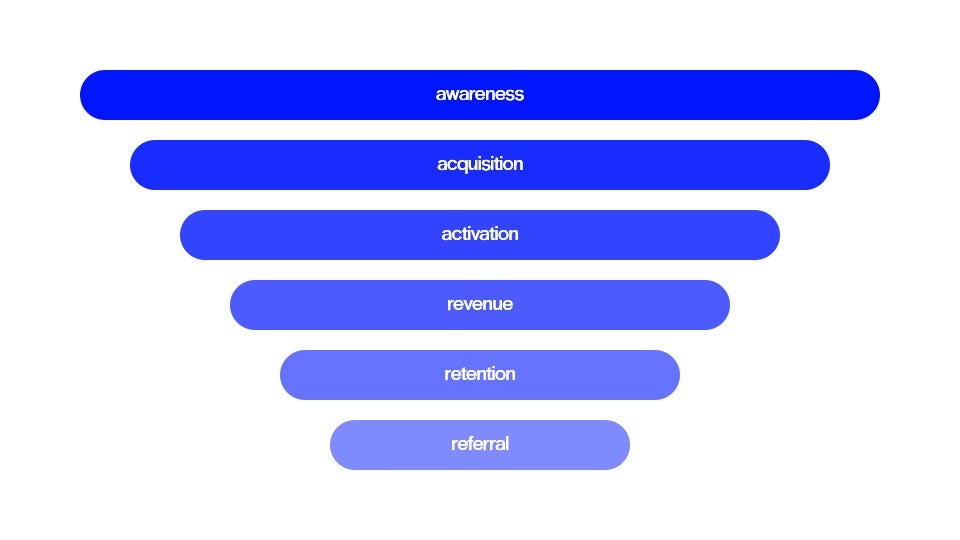In essence, it’s a diagram. But this diagram is sure to keep your profits pumping and your revenues reeling. Think of this as a pictorial representation of how a lead travels through the sales process in your organisation.
In a sense, the typical funnel resembles an inverted pyramid, and closely resembled the Conversion Funnel Optimisation method. And as we travel down this funnel, it gets narrower as the leads get qualified. So what happens you finally reach the end of the structure? It concludes with the leads turning into assets. In other words, customers.

Sales Funnel – a Quick Recap
The problem is that a large volume of leads can overwhelm your funnel. After all, the more you scale your business, the more responsibilities unfold. The same is true with the sales funnel – even such an efficient model needs assistance from time to time. Without it, you risk underutilising the model and making deadly mistakes in your project.
So, how can you spot and plug the leaks? This idea is to ultimately take advantage of potential revenue in your funnel. Correctly managing this keeps customers flowing through the structure and ‘converting’ into whichever objectives you have in store for this user. Most commonly, this would be spending X amount of dollars, but it could be for sign-ups or referring other customers.
Ultimately, overseeing the customer journey and systematically managing this scheme is called Sales Funnel Management. Of course, that might just be your job!
Why Sales Funnel Management Matters
The fact is - a sales funnel is a problematic and unforgiving model. It can be very misleading, as it implies a smooth process of turning leads into sales. Yet, as a rule of thumb, only 10% of gathered leads are said to be sales-ready. The remaining 90% needs to be consistently nurtured. Some leads may require travelling down the length of the sales funnel before becoming a customer.
Of course, we’re not talking about a single customer. A larger company may face hundreds or even thousands of leads per day. A protocol for managing sales within their funnel position gives salespersons the ability and competence to carry out their jobs. Efficient sales funnel management translates to a competent salesperson.
If your company has established a well-designed and accurate sales funnel, it will likely streamline the sales process. Its added benefits include filtering leads according to their level. A lead at the top may need a more compelling message than one at the bottom, for instance. That allows you to pinpoint your message and communicate based on the findings of the lead’s given point within the funnel.
Consequences of Bad Sales Funnel Management
Sales representatives will always expect challenges when carrying out conversions. The most significant pain point in the job description is not telling ‘hot from cold leads’. An inaccuracy in assessing prospective leads can also result in unqualified hot leads finding themselves at the top of the sales funnel.
Mismanaging these leads can result in such prospects dropping out due to slow response times. Alternatively, they could find themselves to be ‘stuck’ inside the middle of the funnel – eventually becoming a cold lead.
This could essentially mean missing out on golden opportunities for the business. A lack of awareness and insight can ultimately be cost-heavy and impractical for your organisation.
Software Solutions
One such way of providing a remedy to these calamities is through software solutions, whose primary function is digital transformation and automation of various tasks within the job.
A highly recommended module is the Customer Relationship Management (CRM) software solution of these solutions designed to provide support. This software effectively allows oversight on leads management.
Here, you can qualify leads, track activity at each stage of the customer journey, and make automatic follow-ups at the right moment. What’s more, it is possible to do away with scheduling emails by creating a systematic module. Seek out an appropriate solution, or learn how to design a customised solution for yourself.
What Sales Funnel Managers Must Do
Support from above is key to keeping your operations continuing, with patience and reasonable expectation. Leadership teams must devote enough time towards reviewing sales funnel management efforts and offer feedback to improve these roles.
When assigning a lead generation strategy, your most important task will be aligning lead generation with conversion. By recognising the journey and acting to realise conversions, your sales funnel strategy will reflect a more ‘qualitative’ approach, with the customer placed at the centre.
It’s essential to set realistic goals that effectively expand your organisation but that appear within reason. I can’t stress enough the importance of the enthusiastic approach. Without it, you lack inflow of engaging leads throughout the first two stages of the funnel process.
Monitoring stages, in any case, is vital, as findings can reveal any potential gaps in the process and what can be done to improve it. But take care to share and allocate leads between team members too! For example, a Sales Funnel Manager would be in charge of the lead distribution mechanism used to present leads between different employees.
Final Considerations
Sales funnels don’t guarantee sales. In fact, many are dysfunctional and will fail without a competent sales funnel manager and accompanying system.
Most efficient is a combination of intuition and intuitive software. With proactive approaches and attention paid to customer needs, it’s possible to host a very effective strategy. This strategy will help you address and convert leads from hundreds of real prospects.
A software solution can not only assist in leads management but also with managing customers. It’ll be easier to monitor their status in the funnel, as well as granting the organisational powers of CRM software. So next time you engage in a new strategy – it’s this tool that can take you further than ever!





